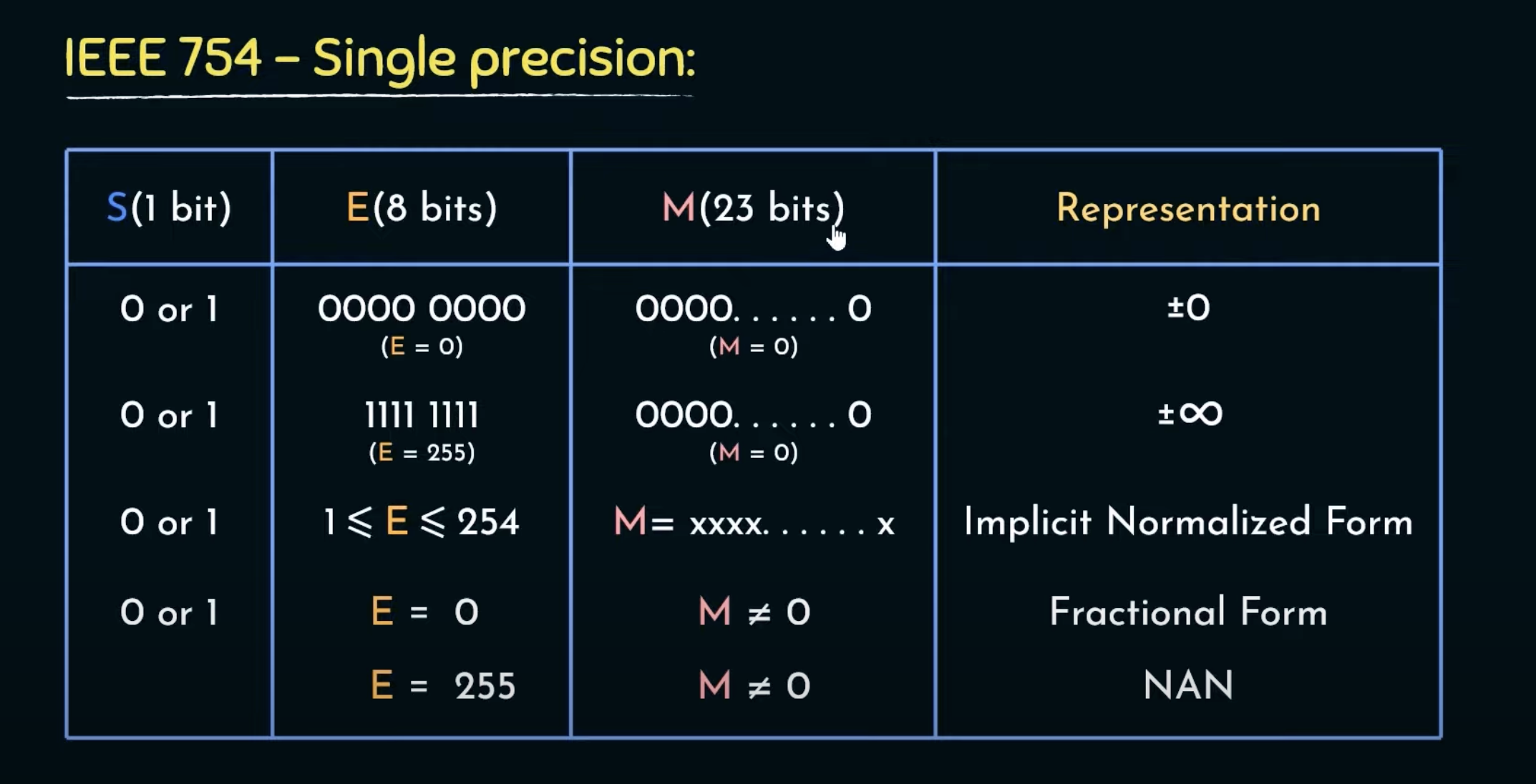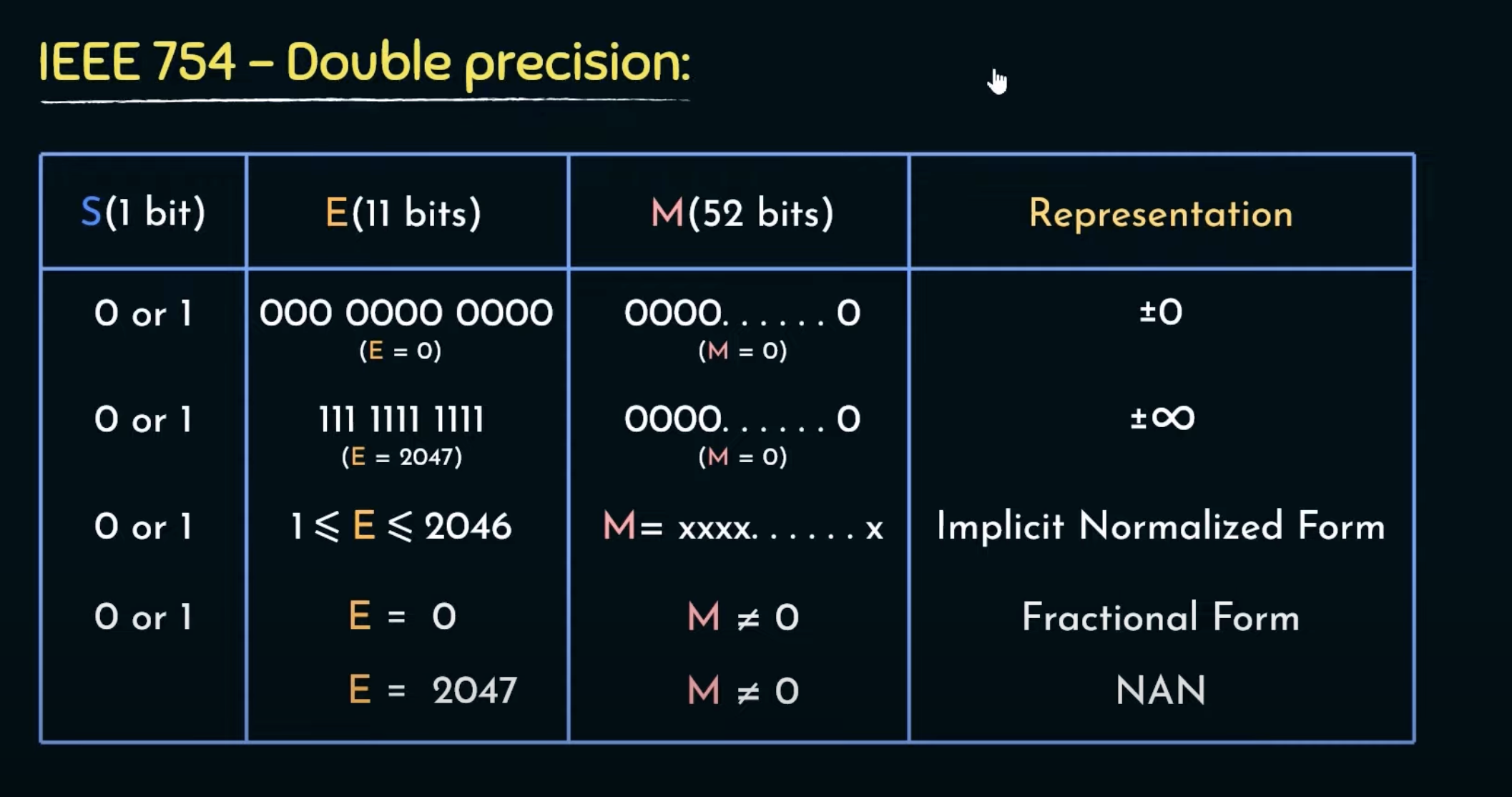The IEEE754 Floating Point Format
Online converter
IEEE754 creates a standard for the floating point numbers, and also defines how non-number values (NaN, infinity) can be presented
Just like Floating Point Numbers, the value of IEEE754 can be given as


NaN in IEEE754
https://en.wikipedia.org/wiki/NaN#
All 11 bits of exponent should be high, plus at least one mantissa
This allows for pogrammers to specify multiple types of NaNs, by combination of the sign bit and 23 bits of mantisa
Quite vs Signaling NaN
Signalling NaNs, or SNaNs, trigger an exception when encountered, while quite NaNs, or QNaNs, are simply propagated through computation until they appear in human-consumable final results.
How IEEE 754 distinguishes these?
The most significant bit of the mantissa field distinguishes between the two kinds of NaNs: it is cleared (0) for SNaNs and set (1) for QNaNs.
Is NaN == Infinity?
In floating-point calculations, NaN is not the same as infinity, although both are typically handled as special cases in floating-point representations of real numbers as well as in floating-point operations.
Is it wasing a lot of space for NaNs?
Advantage of such representation is :
- All the special input operands can be detected by examining the exponent field only, which is either all-
0(zeros and denormals), or all-1(infinities and NaNs)